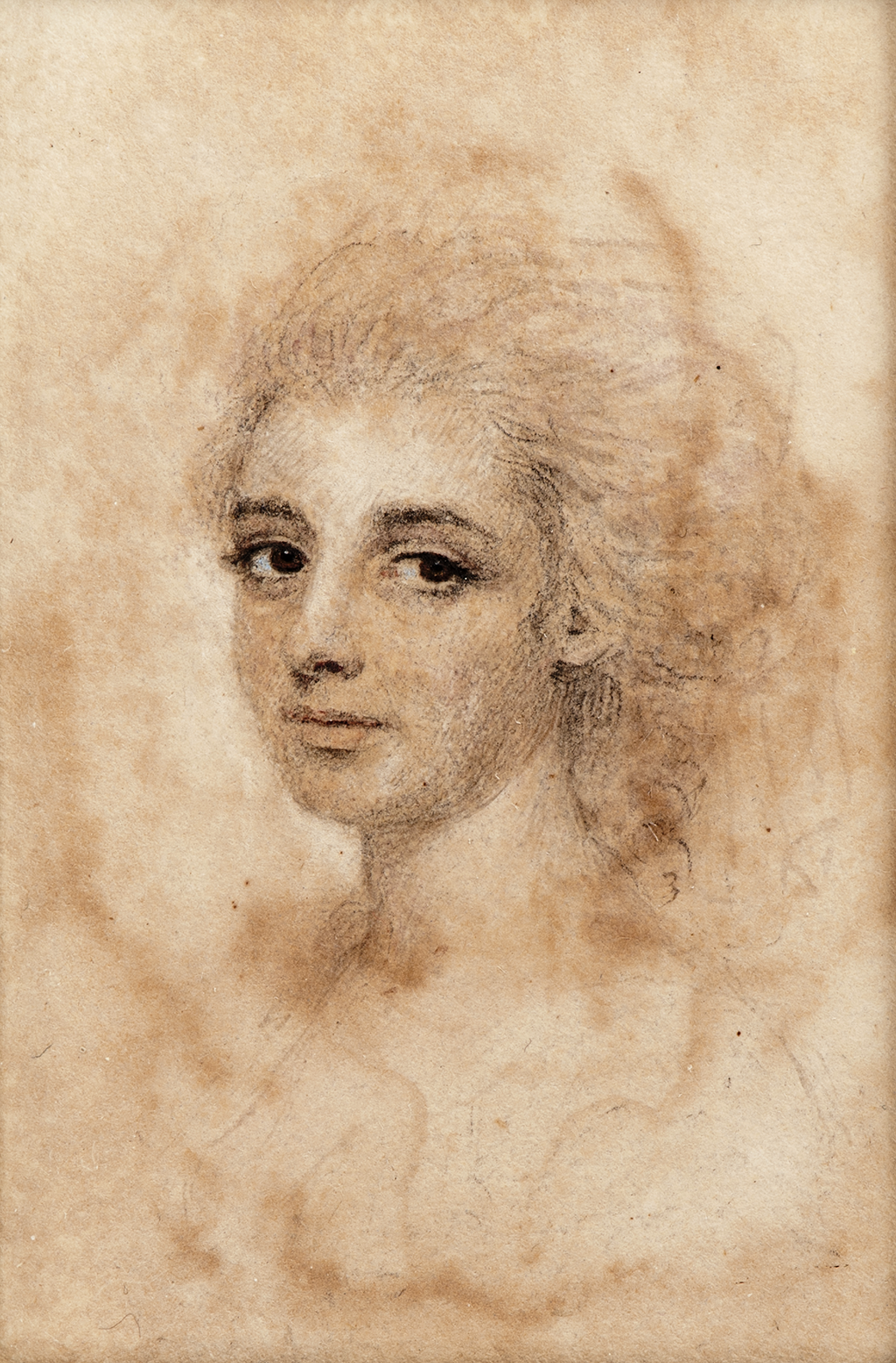Citation
Chicago:
Aimee Marcereau DeGalan, “John Smart, Portrait of a Woman, ca. 1786,” catalogue entry in Aimee Marcereau DeGalan, Blythe Sobol, and Maggie Keenan, The Starr Collection of Portrait Miniatures, 1500–1850: The Collections of the Nelson-Atkins Museum of Art, vol. 4, ed. Aimee Marcereau DeGalan (Kansas City, MO: Nelson-Atkins Museum of Art, 2025), https://doi.org/10.37764/8322.5.1578.
MLA:
Marcereau DeGalan, Aimee. “John Smart, Portrait of a Woman, ca. 1786,” catalogue entry. Aimee Marcereau DeGalan, Blythe Sobol, and Maggie Keenan. The Starr Collection of Portrait Miniatures, 1500–1850: The Collections of the Nelson-Atkins Museum of Art, edited by Aimee Marcereau DeGalan, vol. 4, Nelson-Atkins Museum of Art, 2025. doi: 10.37764/8322.5.1578.
Artist's Biography
See the artist’s biography in volume 4.
Catalogue Entry
Read more about this object at the associated catalogue entry.
Technical Note
Citation
Chicago:
Rachel Freeman, “John Smart, Portrait of a Woman, ca. 1786,” technical note in Aimee Marcereau DeGalan, Blythe Sobol, and Maggie Keenan, The Starr Collection of Portrait Miniatures, 1500–1850: The Collections of the Nelson-Atkins Museum of Art, vol. 4, ed. Aimee Marcereau DeGalan (Kansas City, MO: Nelson-Atkins Museum of Art, 2025), https://doi.org/10.37764/8322.5.1578.
MLA:
Freeman, Rachel. “John Smart, Portrait of a Woman, ca. 1786,” technical note. Aimee Marcereau DeGalan, Blythe Sobol, and Maggie Keenan. The Starr Collection of Portrait Miniatures, 1500–1850: The Collections of the Nelson-Atkins Museum of Art, edited by Aimee Marcereau DeGalan, vol. 4, Nelson-Atkins Museum of Art, 2025. doi: 10.37764/8322.5.1578.
The small collection of John Smart drawings in the Nelson-Atkins collection is executed on laid paper: One of the two types of paper. Until the mass manufacture of paper began in the mid-eighteenth century, all paper was handmade and quite expensive, as the process was laborious. Linen, cotton, or hemp rags were soaked in vats and stirred until they disintegrated into pulp, which was pressed into a mold consisting of a wooden frame of gridded copper wires; the parallel laid wires were thinner and more closely spaced than the thicker, widely spaced chain wires. The linear impressions made by the laid wires formed what are called laid lines on the finished sheet of paper; the wider lines that cross them are called chain marks. In the late eighteenth century, there were widespread changes in the laid mold structure, and papers produced prior to this time are distinguishable by an accumulation of fibers along the chain lines. The other type of paper is wove paper. and wove paper: One of the two types of paper. Wove papers may be either machine or handmade, and are produced from molds that have a woven wire mesh. The weave of the mesh can be so tight that it produces no visible pattern within the paper sheet, and often wove papers have a smoother surface than laid papers. Wove papers were developed during the mid-eighteenth century, but did not come into widespread use until later. The other type of paper is laid paper..1The works on paper include the current object; Portrait of a Woman, Possibly Jane Huck-Saunders, F58-60/143; Portrait of Alexander James Dallas, 2023.22; Portrait of Mr. Sharrock, Possibly Robert Sharrock, F58-60/141; Portrait of a Man, F58-60/142; Portrait of Mr. Dickinson, F58-60/131; Portrait of Charles Stewart, Lord Linton, later 7th Earl of Traquair, F58-60/132; Self-Portrait, 2024.10; Portrait of a Woman, F58-60/140; Portrait of James Fittler, F65-41/46; and Portrait of Mr. Blackburne, F73-33. The papers are high-quality, stiff, and moderately thick. Their small size makes it difficult to determine if they were machine or hand made. Smart used the smoother side of the paper as the drawing surface. The papers currently have a yellow to light brown tone; however, treatment of F58-60/145 (Fig. 1) indicates that the original paper color was a mellow white. The color and use of the less-textured side of the paper may have been intentional choices made to replicate the color and texture of ivory: The hard white substance originating from elephant, walrus, or narwhal tusks, often used as the support for portrait miniatures., a common support for portrait miniatures.

Notes
- The works on paper include the current object; Portrait of a Woman, Possibly Jane Huck-Saunders, F58-60/143; Portrait of Alexander James Dallas, 2023.22; Portrait of Mr. Sharrock, Possibly Robert Sharrock, F58-60/141; Portrait of a Man, F58-60/142; Portrait of Mr. Dickinson, F58-60/131; Portrait of Charles Stewart, Lord Linton, later 7th Earl of Traquair, F58-60/132; Self-Portrait, 2024.10; Portrait of a Woman, F58-60/140; Portrait of James Fittler, F65-41/46; and Portrait of Mr. Blackburne, F73-33.
Provenance
Mr. John W. (1905–2000) and Mrs. Martha Jane (1906–2011) Starr, Kansas City, MO, by 1958;
Their gift to The Nelson-Atkins Museum of Art, Kansas City, MO, 1958.
Exhibitions
The Starr Foundation Collection of Miniatures, The Royal Ontario Museum, Toronto, December 8, 1972–January 14, 1973, no cat., no. 116, as Unknown Lady.
John Smart: Virtuoso in Miniature, The Nelson-Atkins Museum of Art, Kansas City, MO, December 21, 2024–January 4, 2026, no cat., as Portrait of a Woman.
References
Ross E. Taggart, ed., Handbook of the Collections in the William Rockhill Nelson Gallery of Art and Mary Atkins Museum of Fine Arts, 4th ed. (Kansas City, MO: William Rockhill Nelson Gallery of Art and Mary Atkins Museum of Fine Arts, 1959), 265, as Portrait of a Lady (sketch).
Ross E. Taggart, The Starr Collection of Miniatures in the William Rockhill Nelson Gallery (Kansas City, MO: Nelson Gallery-Atkins Museum, 1971), no. 116, p. 42, (repro.), as Unknown Lady.
If you have additional information on this object, please tell us more.